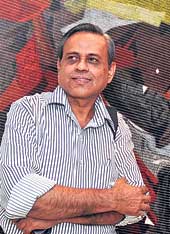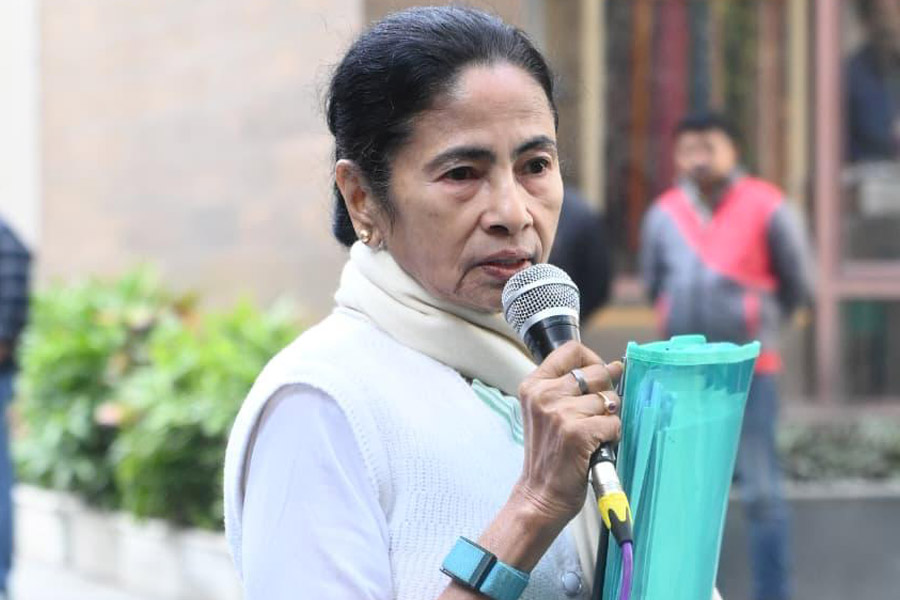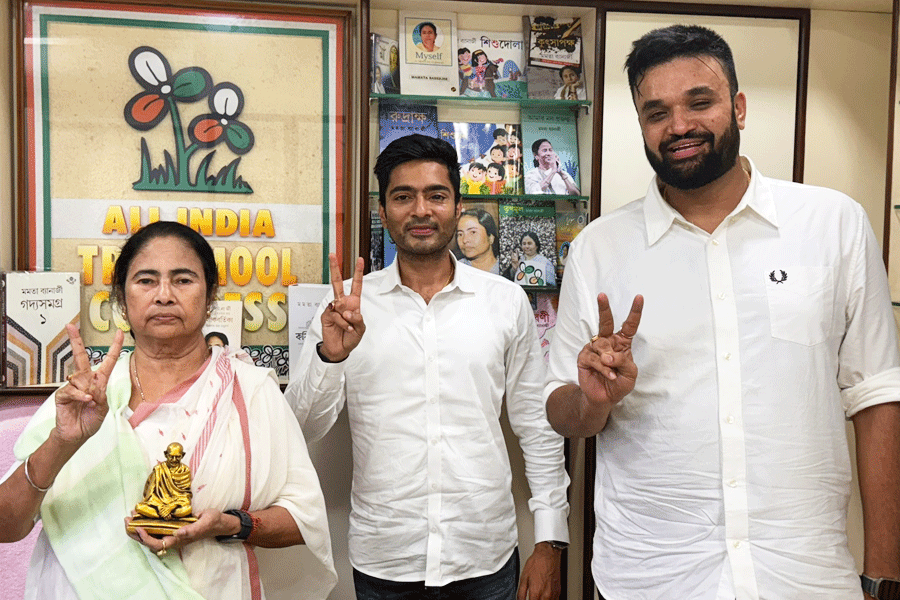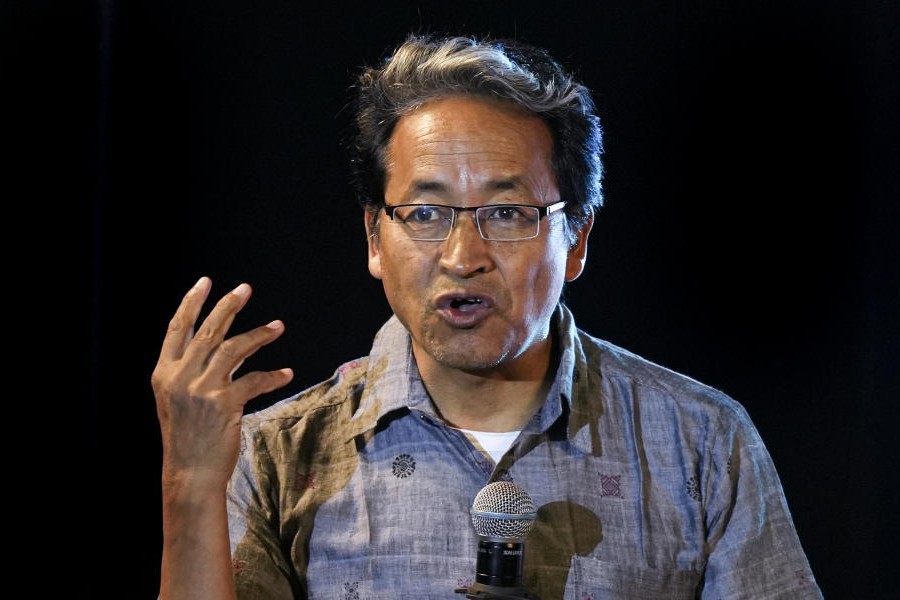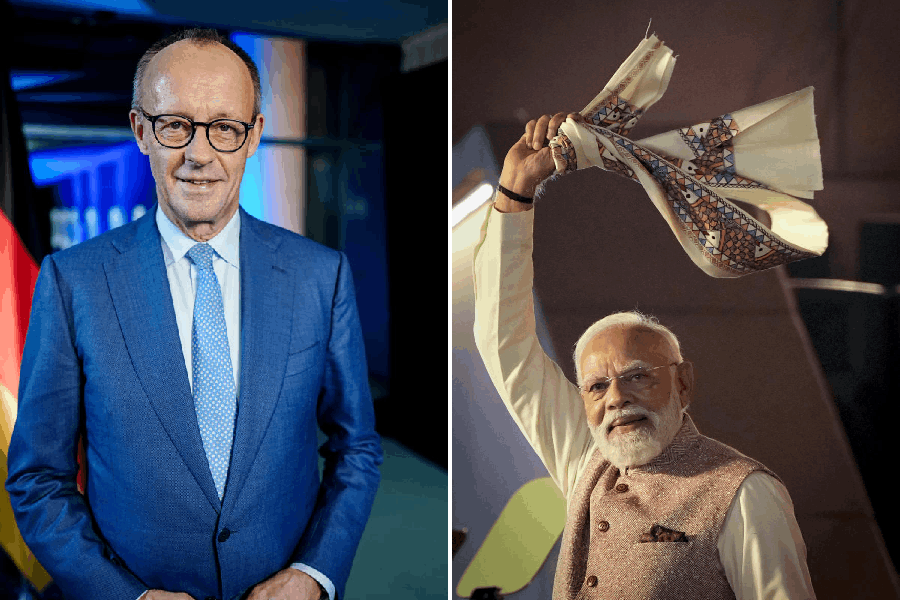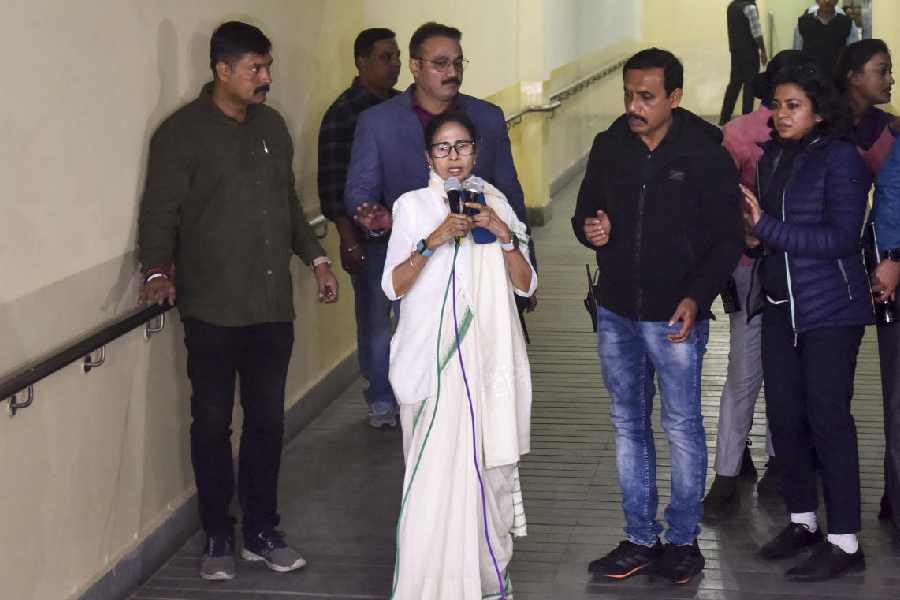 |
| Yusuf at CIMA Gallery. Picture by Pabitra Das |
Personalities translate onto the canvas. Exuberance and a riot of colours often hint at an extrovert character, while meditations in sombre hues can reflect a more inward-looking nature.
Bhopal-based artist Yusuf, whose second solo in Calcutta was inaugurated at the CIMA Gallery on Friday evening, delves into the contemplative and the mysterious in the natural world and in the human psyche.
His quiet observations of man and his environment are reflected in forms that break boundaries, and are not limited by media, genre or even titles. Born in Gwalior in 1952, Yusuf graduated in fine arts and sculpture from the Gwalior Art College.
In his youth, he moved to Bhopal and spent a substantial period of time assisting the late J. Swaminathan in founding Bharat Bhavan, a multi-disciplinary art complex which is perhaps best known for its museum. A key figure in the art movement in Bhopal, Yusuf is a celebrated teacher who is known for his ceaseless support to young artists.
A veteran of several one-man shows across the country, Yusuf is the recipient of the Quingdao International Print Biennial of China and International Asian European Biennial, Turkey.
Essentially a printmaker, Yusuf’s approach has always encompassed graphic elements. Over the past few years, he has moved from pure printmaking to mixed-media, involving dry pastel, ink, pencil and acrylic, and the scale of his work has moved from 3ftx2ft drawings on handmade paper to much larger, 6ftx4ft treated canvases in mixed media.
The CIMA display showcases both categories of his work: the larger canvases more recent, while the drawings date back to the 1990s. Lyrical would perhaps be an apt description of both styles of work.Yusuf’s earlier monochrome drawings — perhaps with a stronger graphic language — in dry pastel and ink evoke root-like forms and branches that flow in a rhythm of their own and are self-sustained.
“I had been delving into monochrome works for a very long time; it’s only recently that I have been experimenting with colour,” says Yusuf.
“I had been delving into monochrome works for a very long time; it’s only recentlythat I have been experimenting with colour,” says Yusuf. The resultantsubmersions into colour reflect his roots and his extensive researchinto folk forms -- warm earth tones are predominant, lush landscapestransmorph into luminous abstractions.Interestingly, Yusuf prefers to call his works “drawings”, notpaintings per se. Essentially print-like work, even his larger onesreflect the patient, characteristically meticulous eye of a seasonedgraphic artist. The recurring motif – which has “always been anelement in my work” – is the unique chiaroscuro of parallel linesacross his works, hinting at the torn pages of a diary.“It’s always about documenting, delving into a personal space,” smilesYusuf. This linear philosophy is what characterises Yusuf’s work; theline, as he puts it, is infinite, limitless and in perfect harmonywith the elemental.Yusuf’s refusal to name his work is also in concurrence with hisobjection to formal structures. “Titles put a limit on your work,”says the affable, soft-spoken teacher of Indore University, in chasteUrdu. “If you name a work ‘a tree’, the form and the perception getlimited to that of a tree, to the viewer or otherwise. It limitsimagination. I do not subscribe to that concept. Contemporarynon-figurative art offers you a chance to keep it open-ended, wherebya work can be interpreted by each viewer differently if it remainsuntitled. It can be perceived differently each day by each individualas he looks at it: sometimes as an ocean, sometimes as a psychologicalspace, sometimes as an abstract form.”It is exactly this philosophy of liberation that underscores Yusuf’sinherent artistic personality, where the moment is far morefundamental to the art than the form.The exhibition Yusuf: Recent Works, inaugurated by artists Samir Aich,Suvaprasanna, Bimanbehari Das and Ashoke Mullick, is on at the CIMAGallery till November 7.

